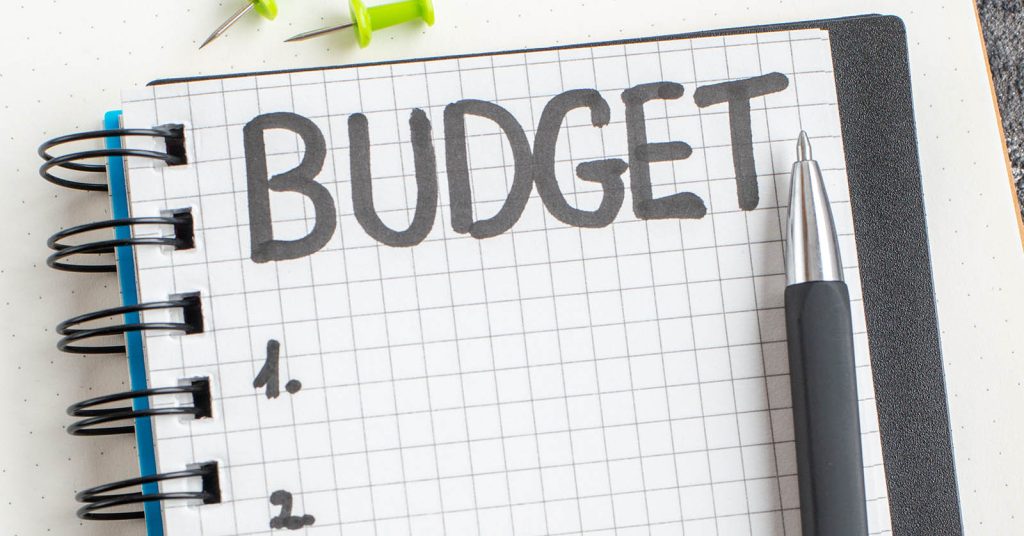New to budgeting and unsure which method to choose? Two proven options — 50/30/20 and the zero-based budget — solve the same problem in different ways. The 50/30/20 rule is a simple percentage split that keeps you moving without micromanaging every line item; the zero-based method assigns every single dollar to a job so income minus outgo equals zero, which helps curb overspending and build intention. U.S. consumer-finance agencies and major personal-finance outlets agree on the core steps no matter which method you use: know your after-tax income, track spending, pick a system you’ll actually maintain, and automate savings where possible. The Consumer Financial Protection Bureau (CFPB) recommends starting with a working budget and tracking due dates so bills don’t surprise you. NerdWallet’s guidance adds a clear overview of both systems — especially the “every dollar has a job” logic of zero-based budgeting — while Investopedia’s 50/30/20 explainer shows how the split works with after-tax pay. For context, the Bureau of Labor Statistics’ Consumer Expenditure Survey shows average annual household spending trends, which are handy when you’re pressure-testing your own numbers. This guide compares both methods fairly, shows when each shines, gives you a 30-minute setup, and walks through real numbers so you can pick the approach that fits your life today and still scales later.
Key Takeaways
- 50/30/20 = fast start. Allocate 50% needs, 30% wants, 20% saving/debt; ideal if you’re new or busy.
- Zero-based = full control. Every dollar gets a job; great for overspenders or tight goals.
- Same prerequisites. Use after-tax income, track bills/due dates, and automate savings.
- Reality check. Compare your plan to actual U.S. spending patterns as a sanity test.
What Each Method Means
The 50/30/20 rule splits after-tax income into three buckets: 50% for needs (housing, utilities, groceries, minimum debt payments), 30% for wants (dining out, entertainment, nonessential shopping), and 20% for savings and additional debt payoff beyond minimums. The method was popularized in the U.S. context and persists because it’s easy to remember and quick to apply without a lot of category-level bookkeeping. You still track spending, but you’re watching three totals more than thirty little sub-totals, which can be psychologically easier in a busy household. If rent or childcare pushes your “needs” above 50%, you can flex the percentages temporarily and carve back elsewhere, which keeps momentum going instead of creating an all-or-nothing standard. Because the numbers are percentage-based, they also scale smoothly when your income changes, so raises and seasonal dips don’t require rebuilding the plan from scratch. The downside is that the broad buckets may hide creeping overspending inside “wants,” especially if you aren’t reviewing category details for a few minutes each week. In contrast, a zero-based budget assigns every single dollar a job in advance — bills, true savings goals, debt paydown, and even fun — so that income minus planned outgo equals exactly zero. That design forces intention and helps many people spend less because there is no “miscellaneous” cash left unassigned. It pairs naturally with the envelope system (physical or digital) because you are funding specific categories and stopping when the category is empty, which is why zero-based plans are often recommended for overspenders and those who want hands-on control. However, zero-based can feel time-consuming if your income varies week to week, and without a simple routine you may abandon it; that’s why this guide shows a light-weight cadence you can sustain. The CFPB’s budgeting materials and mainstream personal-finance explainers reinforce the same idea either way: track income, track expenses, pick a system that matches your temperament, and revisit it regularly so it stays realistic.
When 50/30/20 Shines vs. When Zero-Based Wins
Use 50/30/20 if you need a friendly on-ramp that gets you saving inside the first hour, especially when your paychecks are predictable and you’re fighting decision fatigue. It’s also ideal for couples who want an easy shared framework that doesn’t require weekly category debates yet still produces a clear savings target. Choose zero-based if you overspend when cash is “unassigned,” if you’re attacking debt aggressively, or if you thrive on detailed control; the “every dollar has a job” approach eliminates ambiguity, which is often where lifestyle creep sneaks in. If your income is irregular — think tipped work, sales, gigs — zero-based can still work well by budgeting one paycheck at a time and funding the next most important categories first. If your “needs” are currently above 50% because of housing or childcare, 50/30/20 can be your diagnostic: set the target, then name the specific steps that shrink needs over a few months, such as refinancing, moving, negotiating, or line-item cuts. Zero-based tends to reveal “tiny leaks” (subscriptions, fees, snacks) faster because you notice a category running out mid-month rather than discovering an overage at the end. If you’re teaching teens or young adults, the 50/30/20 language of needs-wants-savings maps cleanly to classroom budgeting resources, which helps the concept stick. For anyone who loves tactile systems, pairing zero-based with digital or physical envelopes creates a strong feedback loop: when the envelope is empty, spending stops until you refill next month. Finally, remember that this is not a dogma choice; many people run 50/30/20 as the high-level target, then use zero-based detail inside the 20% savings/debt bucket to make sure those dollars actually move where they should.
| Method | Best for | How it works | Watch-outs |
|---|---|---|---|
| 50/30/20 | Beginners, busy households, steady paychecks | Split after-tax income: 50% needs, 30% wants, 20% savings/debt | “Wants” creep if you never review categories |
| Zero-based | Overspenders, debt payoff, irregular income (paycheck-by-paycheck) | Assign every dollar a job so income − outgo = 0 | More upkeep if you don’t build a weekly routine |
Definitions aligned with mainstream explainers; see NerdWallet and Investopedia for primers.
Set It Up in 30 Minutes (Step-by-Step)
First, list your after-tax income for the month, including predictable paychecks and benefits, because budgeting gross pay will overstate what you can actually spend. Second, list your fixed bills and typical variable categories (rent, utilities, minimum debt payments, groceries, fuel/transport, childcare, insurance, subscriptions, dining, entertainment). Third, choose your method for this month: if you pick 50/30/20, calculate the three targets and sketch a quick list of which bills sit in “needs” versus “wants.” Fourth, if you pick zero-based, give every dollar a job down to zero, starting with rent/mortgage, utilities, minimum payments, groceries, and transport, then funding savings/debt goals, then wants. Fifth, schedule due dates and set reminders or autopay for fixed bills so you don’t incur late fees and penalty APRs — this is where many budgets fail in practice. Sixth, open a separate high-yield savings account (HYSA) at a reputable bank or credit union and nickname it “Emergency Fund” so transfers are visually obvious; you can also add sinking funds as nicknamed sub-savings. Seventh, automate at least the savings portion (the “20” or your zero-based savings lines) for the day after payday to remove willpower from the equation. Eighth, pick a five-minute weekly check-in where you reconcile transactions, refill envelopes if you use them, and adjust the rest of the month without judgment. Ninth, put a small line for “annual/irregular” expenses and feed it monthly; these are the items that blow up a plan if you ignore them (car tags, gifts, travel, home repairs). Tenth, compare your plan to a reality benchmark a few times a year using the BLS Consumer Expenditure Survey tables; you don’t have to match national averages, but it helps to see where you’re far above or below. Finally, remember that a budget is a permission slip for spending on what matters; if it feels like punishment, adjust the method, not just the numbers.
After-tax pay: $4,000/month → Needs target $2,000; Wants $1,200; Savings/Debt $800. If rent + utilities + groceries + minimums total $2,150, you’re 3.75% over on “needs,” so trim $150 from wants this month and set a housing/insurance plan to pull needs back under 50% over the next 90 days.
Real Numbers: Two Worked Scenarios
Scenario A (steady paycheck, wants creep): Alex takes home $5,200 monthly, pays $1,650 rent, $250 utilities, $600 groceries, $350 car payment/insurance, and $300 in minimum card payments. The 50/30/20 targets are $2,600 needs, $1,560 wants, $1,040 savings/debt. Current needs sum to $3,150, which is above target, so Alex sets a six-month plan: refinance auto insurance, negotiate internet, and aim to move within nine months to knock $300 off rent; for this month Alex trims wants to $1,010 and still puts $1,040 toward savings and extra debt, primarily emergency fund at a HYSA and a small avalanche payment to the highest-APR card. The weekly ritual is a five-minute Sunday review to re-label transactions and nudge dining back inside the wants cap; because the 50/30/20 buckets are broad, Alex can budget in minutes and still grow savings quickly. When categories drift, Alex checks against national spending shares as a gut check rather than a mandate, which keeps the plan realistic. Over time, as housing falls closer to target, the wants bucket grows again without sacrificing the savings rate, which is the behavioral secret behind the rule’s long-term success. In twelve months Alex reviews the three buckets against updated income, because percentage-based methods scale with raises and job changes. The end state is light structure with consistent savings — ideal for someone who wants results with minimal friction.
Scenario B (irregular income, debt payoff): Bree’s after-tax income swings between $3,200 and $4,600, with tips and commission. Bree uses a zero-based plan paycheck-by-paycheck: each deposit funds rent first, then utilities and groceries, then a minimum debt buffer, then gas and phone, then a sinking fund for car repairs. Bree assigns a job to every dollar until the balance hits zero; any extra goes to the next-highest APR card via the avalanche method. Because cash leaks are common with variable income, Bree pairs the plan with physical or digital envelopes for discretionary categories like dining and entertainment; when the envelope is empty, spending pauses until the next refill. The weekly routine is short: reconcile transactions, top up the most urgent categories, and adjust the rest without guilt. When a high month lands, Bree first fills the emergency fund line and annual bills line, then schedules a larger avalanche payment, which smooths the low months. The method is hands-on, but it replaces uncertainty with control, which many irregular earners find calming. If Bree tires of the granularity, a hybrid works: keep zero-based detail for the top five categories and run the rest inside a simple 50/30/20 target for sanity. If envelopes aren’t your style, the same logic works with bank sub-savings and debit categories in an app. The point is not the props; it’s the clarity that every dollar is spoken for before the month starts.
Troubleshooting, Edge Cases, and Smart Hybrids
If your housing and childcare blow past the 50% “needs” target, treat 50/30/20 as a compass, not a grade; document the plan to reduce needs over the next few quarters and protect the “20” as fiercely as possible. If you’re overwhelmed by zero-based detail, start with just five categories that cause the most leaks and leave the rest inside a broader wants cap until you build the habit. If irregular income keeps derailing you, budget per paycheck, fund the essentials first, and keep a small “income smoothing” line that you refill during good weeks; for many people this is more practical than attempting a perfect monthly plan. If you share finances, agree on a weekly or biweekly “money date” to review categories and decide trade-offs together; alignment beats precision in any household budget. If you’d like tactile friction without carrying cash, consider a digital-envelope approach or multiple nicknamed savings “buckets” that you move money between; the behavioral effect is similar. If you want a strong saving default with minimal effort, automate transfers to your HYSA and retirement as soon as you’re paid and let your chosen method allocate the rest; automation is the highest-ROI budgeting hack. If your budget breaks because of “surprise” annual costs, adopt sinking funds for tags, gifts, travel, and maintenance and feed them monthly; irregulars become regular when you plan them. If you fall behind, don’t quit the system — shorten the review cycle and cut two discretionary lines for one month to regain momentum quickly. If you need a sanity check on whether your plan is out of line with typical U.S. households, scan the BLS Consumer Expenditure tables by category; use the data as a reference point, not a command. And if you publish or share your system online, keep privacy and accuracy in mind — teach principles, not personal logins or identifying details.
Tools and Automation
Pick one app or spreadsheet and stop shopping for tools after you start; the best budget is the one you maintain. If you like simple targets and broad buckets, many mainstream apps or even a two-tab spreadsheet (plan vs. actual) work beautifully with 50/30/20. If you prefer zero-based, choose software that lets you assign dollars to categories before the month begins and prevents over-spending without explicit category moves. Turn on bank feeds only if you’ll reconcile weekly; automatic categorization saves time but can hide errors if you never look. Enable autopay for fixed bills and auto-transfer for savings so you don’t rely on memory, which the CFPB explicitly suggests when it talks about organizing finances and creating a working budget. Keep a physical or digital calendar of due dates visible to all household decision-makers, which reduces late fees and the stress that leads people to abandon budgeting. If you use envelopes (physical or digital), start with just a few high-impact categories; too many envelopes can create “budget fatigue.” Limit your tool changes to once per quarter, because switching systems repeatedly will destroy your historical data and make trend analysis impossible. If you want to benchmark your plan against the country, bookmark the BLS Consumer Expenditure Survey’s summary page and the current tables; even a quick glance at shares can help you spot outliers. Finally, if you’re teaching a teen or a class, the CFPB’s free worksheets and the “needs-wants-savings” framing map neatly to the 50/30/20 language and help new budgeters get traction fast.
Frequently Asked Questions (FAQs)
Is the 50/30/20 split mandatory?
No. It’s a starting point popularized in U.S. personal finance; you can flex the percentages to fit local costs or life phase and still keep the structure. The rule is typically applied to after-tax income.
Can zero-based work with irregular income?
Yes — budget per paycheck, fund essentials first, then assign remaining dollars to savings, debt and wants until you hit zero. Many guides recommend this approach for variable earners.
Do I need envelopes?
No. Envelopes (cash or digital) are optional guardrails that suit hands-on budgeters and overspenders; they’re a popular add-on to zero-based planning.
How do I sanity-check my numbers?
Use the BLS Consumer Expenditure Survey as a reference point for typical U.S. spending shares and dollar amounts, then tailor to your situation.
Sources
- Investopedia — 50/30/20 Budget Rule Explained
- NerdWallet — Zero-Based Budgeting
- NerdWallet — How to Budget Money
- CFPB — Budgeting: How to Create a Budget and Stick With It
- U.S. Bureau of Labor Statistics — Consumer Expenditure Survey (overview)
- BLS — CE Tables (2023–2024)
- NerdWallet — Envelope (Cash Stuffing) System
- Fidelity — Cash Envelope System Explained
- CFPB — Organizing & Managing Finances (PDF)
- CFPB — Learning About Budgets (needs/wants/savings)









